Buckwheat porridge is an ideal option for starting complementary foods for a child for several reasons. Firstly, it is hypoallergenic and gluten-free, and secondly, it is very nutritious and useful product, which contains all the vitamins and minerals necessary for a growing baby. Being a source of protein, it also contains iron, which helps maintain the level of hemoglobin in the blood, calcium, indispensable for the growth of bones and teeth, plus it is rich in iodine, phosphorus, manganese, B vitamins and PP. In addition, buckwheat is easily absorbed by the child's body and its use does not lead to constipation.
Buckwheat porridge is not only satisfying, but also contains a lot of useful vitamins and minerals.All about the benefits of buckwheat
It is difficult to evaluate all the useful qualities that buckwheat has. In addition to the fact that it contains a large number of vitamins and mineral elements, buckwheat supplies the child's body with all the necessary substances for its full-fledged work. However, a balanced composition is not its only advantage.
Buckwheat also boasts a high nutritional value, which is due not to the high calorie content of the product, but to the content of slow carbohydrates, fiber and easily digestible proteins. For the record, there are only 110 kcal per 100 grams of porridge.
The value of the composition of cereals
The advantages of the composition of such porridge include:
- The content of complex carbohydrates. Carbohydrates of this type do not increase blood sugar, which is typical for simple or so-called fast carbohydrates. Thanks to them, a feeling of satiety remains in the body for a long time, since their splitting is accompanied by the release of a large amount of energy.
- The presence in the composition of very valuable plant proteins. Their value lies in easy digestibility and stimulation of the dynamic development of muscle mass. In addition, the proteins contained in buckwheat are rich in amino acids, the complex compound of which experts recognize as the most balanced among food products.
- The presence of fiber. Normal digestion depends on these dietary fibers, as they increase intestinal motility. The amount of dietary fiber in buckwheat is 5-10%, and this exceeds their volume in the same rice three times.
- No gluten. Buckwheat belongs to the family of herbaceous, not cereal plants, which include wheat, oats, barley and rye. It is in the latter that this vegetable protein is contained. As a result, buckwheat will not cause allergies and indigestion in gluten intolerant children, which means it is perfect first complementary foods.
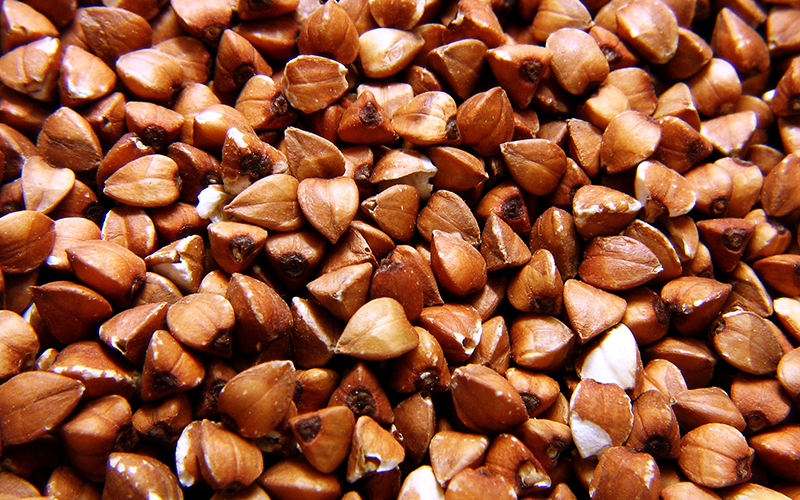 Buckwheat does not contain gluten (gluten), so it is suitable for children with intolerance to it
Buckwheat does not contain gluten (gluten), so it is suitable for children with intolerance to it What is the benefit of buckwheat?
What is the benefit that distinguishes buckwheat from other cereals? It:
- Strengthening immunity. Buckwheat helps to support the immune system due to the content of a substance such as rutin. It, in turn, enhances the action of vitamin C, and therefore buckwheat perfect for preventing acute respiratory infections and colds in children.
- Help in muscle development. The increase in muscle mass is due to the large amount of proteins and complex carbohydrates in the porridge.
- Normalization of the digestive tract, which provides fiber that promotes natural metabolism.
- Prevention of anemia. Here, the matter was not without iron, with which she is so rich. Iron deficiency in the body is dangerous because the bone marrow produces an insufficient amount of hemoglobin. It is a protein found in blood cells and ensures the transport of oxygen in the blood stream. This is fraught with a weakening of the immune system, low activity and a constant feeling of fatigue.
- Strengthening the heart muscle and blood vessels. Potassium in large quantities has a positive effect on the functioning of the cardiovascular system.
- Hypoallergenic. An allergic reaction to buckwheat is much less common than to other cereals. An allergy in a baby can only be caused by personal intolerance to the product, the explanation of which does not yet exist.
Entering buckwheat porridge in the diet of a child
The period of introducing buckwheat into complementary foods initially depends on the type of feeding. In the case when the baby eats exclusively his mother's breast, during the first 6 months he should have enough breast milk. After reaching six months of age, you can already feed the baby. Usually, complementary foods begin with vegetable broths, and cereals are introduced as the next step in 8-9 months. Among them, buckwheat may well be the first. You can also start with it if cereals and not vegetables are chosen as the first food. Artificial children can taste buckwheat already in 4-5 months age. However, it is up to the pediatrician to decide when exactly to administer it, after examining the baby.
Preference should be given to porridge of light colors - in it the grains have undergone minimal heat treatment, which means that they retain the main useful properties. When raw, the groats have a gray-green color, which turns brown during the frying process.
For complementary foods, the core is more suitable - whole buckwheat, rather than chopped - split grain. The nucleus is different high quality, while chopped is not so useful and is used in the preparation of porridges with a viscous consistency. Regarding buckwheat flakes, they are obtained by flattening the grain. During such industrial processing, the integrity of the grain is violated, which leads to the loss of useful qualities.
Closed ceramic or glass dishes are ideal for storing buckwheat. Failure to comply with the basic rules of storage can adversely affect the quality and its taste properties.
The first complementary food is better to choose dairy-free porridge, which is easy enough to cook at home on your own and which is less likely to provoke allergies. You can also choose from ready-made options for industrial production. In addition, buckwheat goes well with vegetables, meat and dairy products.
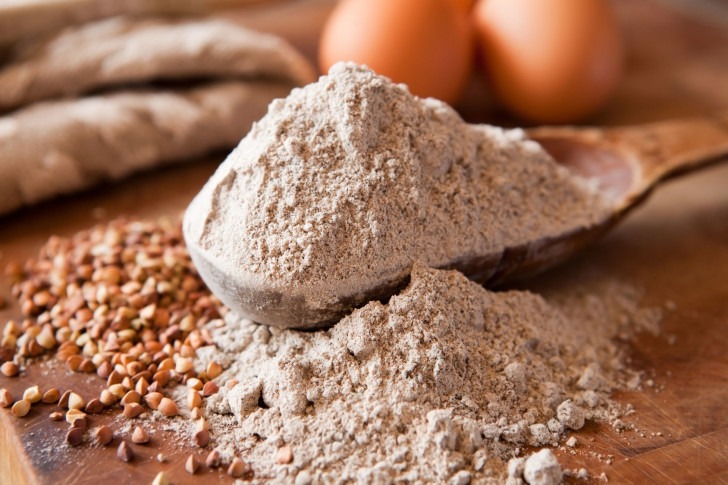 For babies, it is better to use ground buckwheat, which does not lose its taste.
For babies, it is better to use ground buckwheat, which does not lose its taste. Cooking buckwheat porridge for babies
For babies, salt, sugar, butter and milk should not be added to porridge. However, already at 7-8 months it is allowed to dilute it with milk, which is previously half diluted with water, or add a teaspoon of cottage cheese or cream to it. If a one-year-old baby has enough teeth, you don’t have to grind the porridge, otherwise it’s better to do it, and in any form, raw or cooked.
For porridge with a liquid consistency up to a year, it is convenient to use a nipple (we recommend reading:). After the baby has mastered eating with a spoon, it can be cooked thicker.
The sequence of preparation of ground porridge
First option:
- prepare the cereal by selecting from it all the black grains and rubbish;
- grind with a coffee grinder or blender until it looks like semolina or even finer into flour;
- pour the resulting mixture with water in the proportion: 1 tablespoon of buckwheat per 100 ml of water;
- bring the porridge to a boil and cook for 15 minutes;
- after cooling, you can add milk mixture to it or breast milk.
Second option. Buckwheat porridge for babies with milk:
- boil 300 ml of water;
- Pour 3 tablespoons of cereal into boiling water;
- cook under a closed lid for 30-40 minutes, periodically stirring the porridge;
- grind the finished product in a blender or through a sieve;
- add 100 ml of milk to the porridge, then boil and cook for five minutes;
- mix and let cool.
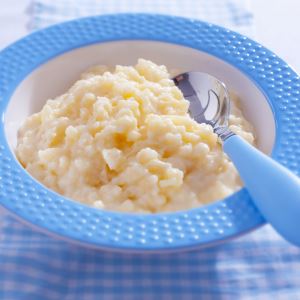 Buckwheat can also be boiled in milk, then it will be more tasty and nutritious.
Buckwheat can also be boiled in milk, then it will be more tasty and nutritious. Pureed porridge
The process of preparing mashed buckwheat porridge has certain differences from other recipes. It takes longer, but thanks to this, its useful qualities remain intact in it. The recipe itself, which is suitable for any age category, is as follows:
- first you need to rinse the cereal in the amount of 2 tablespoons, then dry it in the oven until light brown;
- pre-boil a glass of water;
- place the resulting cereal in boiled water, cook over low heat for at least 40 minutes;
- after readiness, rub the cereal through a sieve;
- dilute the mashed porridge with the water in which it was cooked.
Buckwheat recipe for children after 1 year
Separately, it is necessary to describe the method of how to cook buckwheat for children older than a year:
- Sort out half a glass of cereal and pour 1 glass of water.
- Bring to a boil and drain the water. This allows you to get rid of the bitter taste of porridge.
- Pour water again, bring to a boil and continue to cook for about half an hour.
- During cooking, add a teaspoon of sugar.
- Drain the water, add oil, cool and you can call to eat crumbs.
 For children after a year, buckwheat can be cooked almost according to "adult" technology
For children after a year, buckwheat can be cooked almost according to "adult" technology Ready porridge
Many parents give their preference to ready-made cereals, among the producers of which Nestle is especially popular. Firstly, they are easy to prepare: just dilute 1 tablespoon of cereal in 4-5 tablespoons of boiled water. Secondly, in their wide range you can find dairy-free buckwheat porridge, which does not contain gluten and milk, which is a guarantee that it will not cause allergies.
According to the company's beliefs, their products are made without the help of genetically modified foods, dyes, preservatives and flavors. Nestlé cereals contain only buckwheat flour, mineral elements, vitamins and bifidobacteria. The main feature of such cereals is that they should be prepared before use, using mother's milk or a mixture for dilution.
The truth about buckwheat porridge with milk
Since childhood, we have been convinced of the great benefits of buckwheat porridge with milk, but is it really so? For example, nutritionists argue that these two products are incompatible and the reason for this is complex carbohydrates, which are so rich in buckwheat grains. The body spends an enormous amount of energy to digest them, and it needs completely different enzymes to absorb milk. This greatly complicates digestion. Cereals simply remove the fats that the body receives with milk, and do not improve health.
The most useful porridge cooked in water. Kefir, butter and vegetables are also suitable for adding to this dish, but such food is already recommended for older children.
The introduction of buckwheat porridge into the diet of a child, which contains the optimal amount of vitamins, minerals, protein and fiber, as well as its intake every day, contribute to health promotion. Naturally, portions should correspond to the age and needs of the baby.
Baby cereals as complementary foods are introduced into the diet of a child from 7-10 months. After all, it's time for the baby to receive a more complete and balanced diet. You can buy special instant baby cereals, but you can not give "quick" cereals, such as muesli, with various fillers. They are not adapted for the stomach of a small child, contain dyes, flavor enhancers and other food substitutes. What can cause an allergy or an upset stomach in a baby. It is best to cook cereals yourself from natural cereals. And you can start with rice. This cereal does not contain gluten, is completely hypoallergenic, absolutely does not irritate the intestines. And then gradually you can introduce cereals from other cereals into the menu. For children up to a year, porridges of a liquid consistency are boiled.
Baby cereals - product preparation
If dishes are prepared for children, then the processing and preparation of products should be approached with particular care. All cereals, except for manna, are moved, i.e. visually inspected to exclude the ingress of foreign small objects, and then washed several times. If the dish includes vegetables or fruits, they must be thoroughly washed under water and cleaned. And then they, according to the recipe, are cut into pieces or grated.
If the house has Small child, it is advisable to immediately buy a measuring cup with divisions, so that it is convenient to measure the amount of cereal or liquid. For children under one year old, whole grains of any cereal must be ground to a state of flour, and then boiled porridge. To do this, it is convenient to use a coffee grinder. If there is no coffee grinder, then the finished porridge is rubbed through a sieve or ground with a blender and diluted to the desired consistency with water or milk mixtures (breast milk).
Baby cereals - the best recipes
Recipe 1: Rice porridge with apple for children
Such porridge can be introduced into the baby's diet from six months. And older kids will love it too. Rice porridge can be cooked with or without an apple. Children from one year old can cook rice in milk and add a little sugar, fructose or jam from the plate. Rice grains must first be ground in a coffee grinder or blender.
Ingredients: 3 tbsp rice, 250 ml water, butter, small apple.
Cooking method
Pour the crushed rice with water, add an apple (it must first be peeled and cut into pieces). Boil the porridge for 15 minutes, then beat in a blender until puree, put the butter. If porridge is cooked for babies up to a year old, you can add milk formula or breast milk.
Recipe 2: Semolina porridge for children
Semolina porridge is recommended for children from one year old. Milk is diluted in half with water. From the age of three, you can cook porridge with milk alone. It is generally accepted that semolina is cooked for 10-15 minutes. During this time, she manages to boil well, but also loses a certain amount of protein and nutrients. Therefore, it is better to change the cooking technology: boil the porridge for two to three minutes, then remove it from the stove and wrap it in a towel for 10-15 minutes. During this time, the porridge will swell and reach readiness.
Ingredients: semolina - 4 teaspoons, 250 ml of liquid (125 ml of milk + 125 ml of water), sugar (fructose), butter - 5g.
Cooking method
Bring liquid to a boil and add semolina. It is convenient to do this through a sieve. Firstly, the groats are sieved in thin streams and lumps do not form, and secondly, if any garbage gets into the groats, it will remain in the sieve.
Let the porridge boil for about two minutes, remove from heat and wrap in a towel or blanket for 10 minutes. Add butter, sugar or jam to a bowl of porridge and mix well.
Recipe 3: Banana Oatmeal for Kids
To oatmeal not bored, you can serve it with jam, honey or various fruits - a banana, grated strawberries, or an apple.
Ingredients: 3 tablespoons of oatmeal, a glass of milk, ½ banana, salt, 1 tsp. Sahara.
Cooking method:
Boil milk (you can dilute it with water), add sugar, a pinch of salt, add oatmeal. Make a small fire and cook for half an hour. Allow the finished oatmeal to cool slightly, add the chopped banana and beat with a blender.
Recipe 4: Corn porridge with milk for children
Porridge for children over one year old. If you cook it for babies, you should first grind the cereal to the state of flour in a coffee grinder or beat the already prepared porridge in a blender. If the porridge is prepared for children older than a year, add butter to the plate and sweeten with jam, sugar or honey.
Ingredients: 3 tbsp. tablespoons of cereals, 250 ml of water, 100 ml of milk.
Cooking method
Mix 3 tbsp in water. tablespoons of cereals, boil. Make a small fire and cook for 20 minutes. Whip the porridge in a blender (if necessary).
Recipe 5: Buckwheat porridge with milk for children
For children's cereals, it is better to buy unroasted buckwheat (light yellow-green) - it contains more nutrients. But ordinary buckwheat will do.
Ingredients: buckwheat - ½ cup, water - 1.5 cups, ½ cup milk, 10 g butter, sugar and salt to taste.
Cooking method
Pour water over buckwheat, bring to a boil. Reduce the fire and cook, closing the lid, until the water boils away, about 15 minutes. Remove from heat, wrap in a towel for 10 minutes to warm the buckwheat. Add milk to the porridge, salt, sweeten and bring to a boil. Remove from heat, add butter. Serve porridge warm.
Recipe 6: Millet porridge with pumpkin for children
Fresh pumpkin is preserved until spring, without losing its useful properties. Therefore, in winter months it will help the child get the necessary vitamins. Casseroles, pancakes are prepared from it, porridge is cooked. They turn out juicy and tasty and are liked by so many children.
Ingredients: ½ cup millet, a glass of milk, 2 small slices of pumpkin (about a glass if cut into pieces), sugar and salt, butter.
Cooking method:
Pour the millet with water so that it covers the grain by about 2 centimeters. Cook for 15 minutes, turn off the fire, leave the porridge on the stove. At this time, you can do pumpkin.
Cut the pumpkin into small pieces, pour over milk and put to boil. As soon as it is cooked and becomes soft, it must be ceilinged and added to millet porridge. Salt, sweeten, if the porridge turns out to be thick, add hot milk and boil for 3 minutes. Add oil and serve.
If the baby does not eat well, you can interest him - from the droplets of jam, make a drawing on the porridge - the sun, a typewriter, a bunny, a flower. Or decorate with pieces of fruit or berries.
The most famous Russian porridge is buckwheat. It is gluten-free, low-calorie, healthy and highly nutritious. Great choice for baby food!
Buckwheat porridge is easily digested by the child's body, does not cause. The most useful substances of buckwheat are necessary for the growing body of the child. After all, it strengthens the child's immunity, is useful for digestion, prevents anemia, has a positive effect on the growth of muscle mass, etc.
Buckwheat contains a number of essential amino acids, fiber, iron, niacin, folic acid, and even vitamin K.

Introduction of complementary foods: Buckwheat porridge
 Buckwheat porridge can be introduced into the complementary foods of a child from 4 months. However, it is necessary to remember the WHO recommendation to introduce complementary foods at the age of 6 months. With good weight gain and breastfeeding buckwheat can be introduced after vegetables. For the first feeding with buckwheat porridge, the groats must be ground in a special mill several times to make buckwheat flour. Of course, you can cook buckwheat porridge and beat it with a blender, but buckwheat flour porridge will turn out much better in consistency. Introduced porridge like any New Product, it is necessary to monitor the child's reaction to it.
Buckwheat porridge can be introduced into the complementary foods of a child from 4 months. However, it is necessary to remember the WHO recommendation to introduce complementary foods at the age of 6 months. With good weight gain and breastfeeding buckwheat can be introduced after vegetables. For the first feeding with buckwheat porridge, the groats must be ground in a special mill several times to make buckwheat flour. Of course, you can cook buckwheat porridge and beat it with a blender, but buckwheat flour porridge will turn out much better in consistency. Introduced porridge like any New Product, it is necessary to monitor the child's reaction to it.
Baby food manufacturers offer big choice buckwheat porridge, but it must be remembered that the first buckwheat porridge should be dairy-free, one-component. After porridge has been introduced into the child's diet, you can buy buckwheat porridge with fruit additives or add fruit to the porridge yourself.
Remember that for a child under one year old, porridge should not be sugared or salted. The child's stool does not change much with the introduction of buckwheat porridge into the diet.
How to choose and store
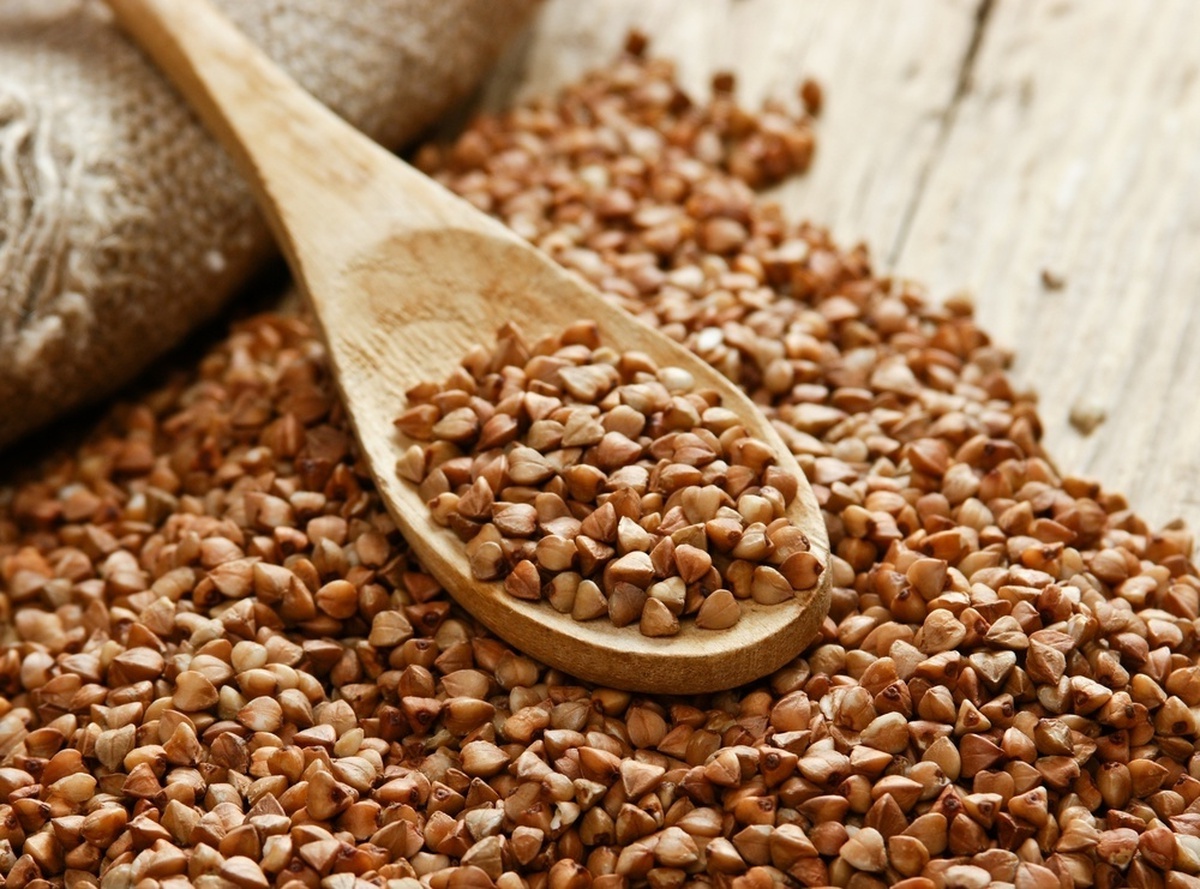 For a child, it is necessary to choose cereals that should be boiled. Fast-cooking and steamed, it contains almost no nutrients, it is quick to cook, but there is almost no benefit from it. We choose the core of the first grade, GOST must be present, and also pay attention to the shelf life. When buying, you should pay attention to the size and color of the buckwheat kernel, if it is not uniform, but the size is different, then it is not worth buying. There should also be no litter in the form of husks, leaves and other things in the package. At home, when opening the package, it is worth evaluating the smell of buckwheat, it should not be musty and smell like mold.
For a child, it is necessary to choose cereals that should be boiled. Fast-cooking and steamed, it contains almost no nutrients, it is quick to cook, but there is almost no benefit from it. We choose the core of the first grade, GOST must be present, and also pay attention to the shelf life. When buying, you should pay attention to the size and color of the buckwheat kernel, if it is not uniform, but the size is different, then it is not worth buying. There should also be no litter in the form of husks, leaves and other things in the package. At home, when opening the package, it is worth evaluating the smell of buckwheat, it should not be musty and smell like mold.
Buckwheat in the form of a kernel, as well as in the form of flour, can be stored for several months in a cool and dry place. If the temperature becomes extremely warm indoors, you can put the buckwheat in the refrigerator. Buckwheat flour should be stored in an airtight container and preferably refrigerated. It is also necessary to take into account that buckwheat absorbs odors from the surrounding space, so it should be stored away from spices and household chemicals.
Freezing buckwheat or buckwheat porridge
Best of all, buckwheat as part of another dish. May be rubbery or grainy when thawed. It is best to freeze not in the form of a puree. It is necessary to defrost only in the refrigerator, especially if buckwheat is cooked in milk.
Preparation of complementary foods: Buckwheat porridge
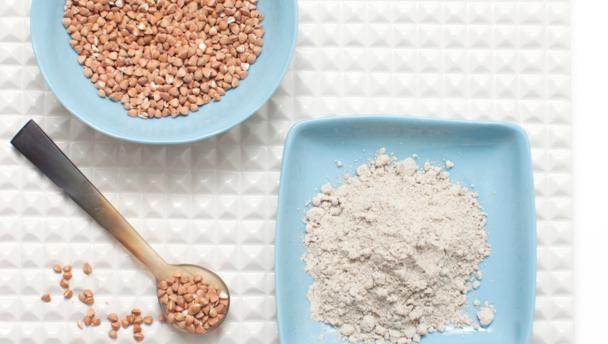 When preparing baby food with buckwheat flour, you need to take 1/4 cup of flour for 1-2 cups of water. Pour buckwheat flour into boiling water, beat with a whisk, stir constantly to avoid the formation of lumps. Boil 10 minutes.
When preparing baby food with buckwheat flour, you need to take 1/4 cup of flour for 1-2 cups of water. Pour buckwheat flour into boiling water, beat with a whisk, stir constantly to avoid the formation of lumps. Boil 10 minutes.
Whole grain buckwheat is cooked like any cereal, the main thing is to rinse it well. Cook over low heat, stirring until the buckwheat is cooked.
As I wrote earlier, there is an original way to cook any cereal. Wash buckwheat, boil water, add buckwheat, cook at a boil for 1 minute, then turn off the heat, close the lid and leave to cool or reach for 5-10 minutes, until cooked. Get crumbly porridge.
How often to give buckwheat porridge?
 When introducing buckwheat porridge into the child's diet, porridge is given until it is fully introduced. Later, with the introduction of other cereals into children food buckwheat alternates with them, but no more 2-3 times in Week. However, it should be borne in mind that buckwheat porridge as part of various dishes is given no more than once a day.
When introducing buckwheat porridge into the child's diet, porridge is given until it is fully introduced. Later, with the introduction of other cereals into children food buckwheat alternates with them, but no more 2-3 times in Week. However, it should be borne in mind that buckwheat porridge as part of various dishes is given no more than once a day.
Foods that go well with buckwheat porridge: Fruits, meat, fish, yogurt, kefir, mushrooms.
Herbs and spices that perfectly complement the taste of buckwheat porridge:
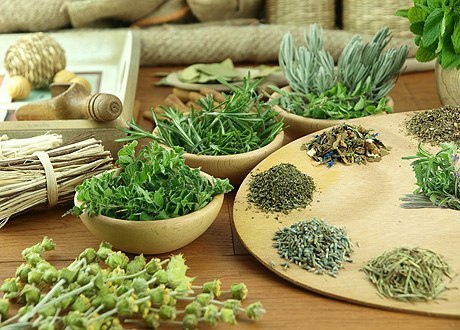
Examples of baby food dishes:
- Buckwheat pilaf
We are not afraid and add me to
The introduction of complementary feeding and, in general, introducing children to adult food is a rather lengthy and extremely responsible process. Products that come after breast milk should not lead to negative reactions - intestinal upset, allergic conditions and poor digestion.
Porridge for the first feeding - one of the best options for complete nutrition of children.
However, it is not easy to understand their diversity: gluten and gluten-free, dairy and dairy-free, corn and buckwheat - which ones are better to cook, when to introduce and give the mixture, with which one, which manufacturers to give preference to. All these nuances should be considered in more detail.
Introducing cereals into complementary foods usually begins from the second half of the year of life, subject to breastfeeding and normal weight gain. Artificers receive the mixture in 4.5 months.
Also, cereals are indicated for persistent rotavirus infections, accompanied by diarrhea. For such babies, high-calorie nutrition is necessary, which is what porridge is considered to be.
With optimal weight gain, the vegetable mixture should be introduced first, and only then it is time for the second feeding. Groats begin to give about a month after the introduction of vegetable puree.
There are 5 main “symptoms” by which parents will be able to understand that it is time to cook porridge for the baby:
- the child begins to erupt teeth;
- he is already confidently sitting in a high chair;
- he or a mixture;
- he shows interest in adult nutrition;
- he is able to lick liquid food off a spoon and swallow it.
If these signs are combined, then the baby is potentially ready for the introduction of porridge as the first complementary food. It remains to determine which products are the best for babies.
The best cereals for initial feeding are gluten-free cereals - buckwheat, corn or rice. Dishes from hercules, wheat or semolina are best left for later, since these cereals contain a likely allergen - the cereal protein gluten.
This food component is poorly absorbed by children in infancy, they have gaziki and pain in the tummy. A similar problem is associated with a lack of special enzymes that perform the function of breaking down gluten in the body.
Porridges for the first complementary foods are divided for a variety of reasons, so parents can choose the best and most suitable products for the child:

Porridges can conditionally include such products as:
- welling - cereal-milk mixture, resembling a very liquid porridge, you can give a baby who does not perceive thick food well;
- instant biscuits- hard slices dissolve easily in milk, and the resulting mixture resembles a thin porridge in consistency;
- porridge-muesli– in the product there are fruit additives, pieces of cookies that will help 9 month old baby more likely to master the ability to chew food.
What should be the best porridge for initial feeding? Dairy-free, gluten-free, mono-component porridge without additives, cooked from buckwheat, corn or rice, is best suited for dating.
The composition of each cereal is unique, so baby nutrition experts have developed their own recommendations that take into account the order of introduction of cereals, serving sizes and other important nuances.

Having chosen one cereal, you should cook it for the child for 2 weeks. When children's tummies get used to the new food product, the next type of cereal can be introduced.
Many mothers are not sure what is best for the baby: give porridge purchased at the pharmacy or cook it yourself.
For example, WHO notes that industrial porridge should be used for initial feeding, as it has several advantages:
- quick cooking (it only takes a few minutes);
- easy digestibility;
- balanced composition, also enriched with useful microelements;
- homogeneous consistency, after cooling they do not thicken;
- the absence of salts, harmful dyes and additional components (of course, this is typical for the best manufacturers);
- multilateral quality control;
- a special manufacturing technique, thanks to which the product is easier to swallow and digest.
The advantages of home-cooked baby cereals include:
- great naturalness of products;
- cost savings, since baby dairy products are quite expensive;
- homemade cereals make it easier to switch to an adult diet.
In the matter of complementary foods, you should focus on the child. Childhood impressions when feeding, the baby's appetite will tell parents which porridge is the best - homemade or purchased.
How to cook?
If industrially made cereals are used, then the question of how to cook porridge practically does not arise, since the technique for creating a dish is indicated directly on the packages.
Most often, the dry mixture is poured with boiled water (you should carefully monitor the temperature regime) and mix until completely dissolved. Cooking porridge should be right before eating, observing the following recommendations:
- Children's porridge, offered to the baby for the first time, must be five percent (from a consumption of 5 grams per 100 milliliters of water). This is the best product consistency for initial feeding. Then the porridge will be 10%.
- You need to start with a minimum volume - a teaspoon. It is best to "arm yourself" with a silicone cutlery suitable for sensitive children's gums.
- The best porridge to inject is pureed, gluten-free, dairy-free, made from buckwheat or rice. It is necessary to ensure that the resulting dish is free of lumps and other inclusions. After feeding the porridge, the baby is given breast milk or the usual mixture.
- Gradually, the portion of gruel increases - by about a teaspoon per day. For a week, you should bring the volume of the dish to 150 grams (this applies 6 month old baby), then the one-time portion will only grow:
- seven months - 160 grams;
- eight months - 180 grams;
- year - 200 grams.
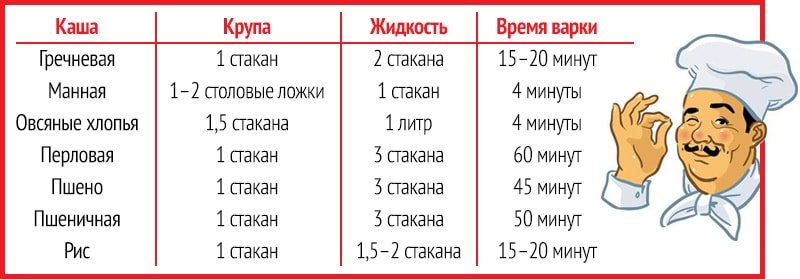
If you are going to cook porridge on your own, the proportions and the above rules remain in effect. Just do not forget to grind the cereal in a coffee grinder before cooking to avoid lumps that the baby will not approve of, and then you can add milk mixtures or mother's milk to the dish.
Rating of the best cereals
Baby porridge is an extremely popular product, so you can buy products from various companies and manufacturers on the domestic market.
When choosing the best dairy-free or gluten-free cereals, it is worth considering not only the reviews of other mothers, but also the opinion of the best independent “specialist” - your own child.
A curious appraisal of industrial cereals was given in popular show"Control Purchase". We must pay tribute to all manufacturers - no unsafe impurities were found in cereals, but only two companies got into the rating: Heinz and Bebi.
Cooked products from other companies, including the popular Malyutka porridge, contained unpleasant lumps.
So, we propose to consider in more detail and in the most thorough way the rating of the best baby cereals, from which you should start feeding young children, as well as reviews from parents that will help you understand which mixtures should be discarded.
1. Heinz
Experts are sure that the best cereals are found in the product line of these manufacturers.
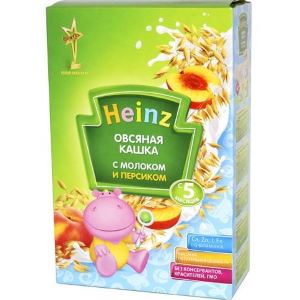 Parents will be able to choose baby food based on the age and needs of the child.
Parents will be able to choose baby food based on the age and needs of the child.
There are many cereals sold in pharmacies and stores:
- dairy-free with additives;
- with milk;
- low-allergenic dairy-free;
- dainty (multi-grain with fruit).
Cooking Heinz porridge is simple - just dilute it in some water.
This infant formula is non-lumpy, pleasant tasting and relatively inexpensive. However, parent reviews show that the consistency of some products does not always resemble traditional porridge.
2. Baby
One of the best cereals with a low content of sucrose is produced by this company.
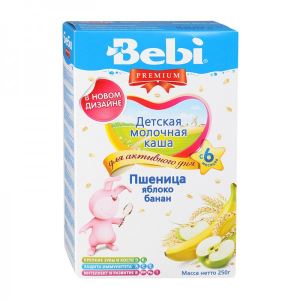 Manufacturers offer the widest range of different products for all age groups.
Manufacturers offer the widest range of different products for all age groups.
Parents will be able to please the child with cereals:
- dairy-free (both "clean" and containing fruit);
- dairy (rice with berries and nuts);
- low-allergenic dairy-free with prebiotics (belong to the premium class);
- premium dairy (mono-component and poly-component).
Reviews of parents indicate that the cereals of this manufacturer are quite cheap and high quality. The only drawback is that they are quickly consumed when cooking.
3. Nestle
This company belongs to those manufacturers who do not need to be introduced, because they have long and firmly won the love of mothers and children with their products.
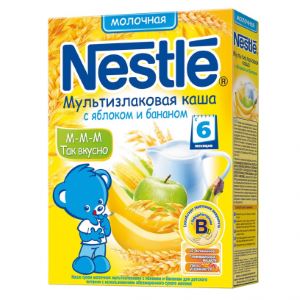 Parents can safely give formula, cereals, mashed potatoes or other foods to the child.
Parents can safely give formula, cereals, mashed potatoes or other foods to the child.
The best products of the Nestlé company got into our rating due to the high content of vitamins and special bacteria that fill the child's gastrointestinal tract with beneficial microflora.
Parents will be able to buy and cook the following types of cereals for their children:
- dairy-free (hypoallergenic and polycompound);
- dairy-free cereals "Pomogayka" (contain probiotic components, various additives, yogurt);
- dairy, enriched with beneficial bacteria;
- with milk "Help";
- fruit "Shagayki".
Porridge is the most important element of nutrition, the acquaintance with which the child begins one of the first among complementary foods. You can buy porridge for the first feeding in the store or cook it yourself. Recently, more and more mothers prefer industrially produced dairy-free cereals, which will be discussed in this article.
General information about the composition of dairy-free cereals
All industrially produced dairy-free cereals are divided into cereals for the introduction of complementary foods (hypoallergenic) and cereals for expanding the diet. All of them do not contain milk protein as one of the strongest allergens, therefore, the hypoallergenicity of cereals for the introduction of complementary foods lies in the use of gluten-free cereals (buckwheat, corn, rice) and the absence of sugar additives. Millet porridge, although gluten-free, is not used at the beginning of complementary foods due to poor digestibility. Gluten, along with sucrose, carries a potential danger associated with the occurrence of food allergies, and therefore their appearance in the child's diet should have strict age limits with mandatory monitoring of the body's reaction. Therefore, these allergens are present alone or together in dairy-free cereals to expand the diet. Gluten-containing cereals are oatmeal, semolina, barley. In addition, these cereals lack some trace elements and other useful substances.
The composition of industrially produced baby cereals can include components that are not originally present in them or were lost during production, that is, they can be transferred to the category of fortified products. The amount of the substance introduced for enrichment in a single portion of the product should be at least 5% of its daily norm or higher (up to 30%) in order to ensure the prevention of a deficient state.
Important! Dairy-free gluten-free porridge (buckwheat, corn, rice) from one type of cereal without fruit and sugar additives is used as the first complementary food.
Some manufacturers have quite wide selection dairy-free cereals to expand the diet with the addition of fruit fillers in the form of dried purees, juices, cereals, etc.
Depending on the degree of readiness for consumption, porridges can be dry, requiring short-term cooking, brewing, dilution with liquid or ready-to-eat. For the preparation of dry dairy-free cereals, it is recommended to use expressed breast milk or artificial formula that the child receives. In dairy-free ready-made cereals, the basis is fruit puree and that is why some manufacturers call them desserts or purees.
Features of the composition and properties of cereals
Dairy-free cereals, depending on the type of cereal, can have a different effect on the state of the child's body.
- Dairy-free buckwheat porridge. Compared to other cereals, buckwheat contains fewer carbohydrates, but their composition differs in favor of complex, long-digesting, creating a long feeling of satiety. Buckwheat is the champion among cereals in terms of the content of such trace elements as iron, iodine, calcium, cobalt, zinc, molybdenum, fluorine. It has a high content of vitamins B1, B2, B9, PP, E. Buckwheat protein is easily digestible and rich in such essential amino acids as lysine and methionine. Buckwheat porridge has the highest nutritional value, normalizes fat metabolism, preventing the formation excess weight contributes to maintaining a high level of hemoglobin in the blood.
- Dairy-free rice porrige. It is low in fiber and high in starch. There are relatively few vitamins and minerals in rice. These are B vitamins, calcium, iodine, iron, zinc, phosphorus. Rice porridge has an enveloping property, is easily digested and does not stimulate gastric secretion. Due to its high starch content, it is recommended for children with regurgitation and unstable stools. The use of uncrushed rice in the manufacture of baby cereals fast food prevents constipation.
- Dairy-free barley porridge. The protein of this cereal contains 18 amino acids, including essential ones. Among the vitamins, B vitamins, choline, A, K, E predominate, and among the minerals potassium, phosphorus, magnesium, calcium, sodium, iron, zinc, manganese, copper, selenium. Barley porridge improves digestion, relieves constipation, strengthens the immune system, and has a high nutritional value.
- Dairy-free oatmeal. It has the highest content of fat and protein, has a stimulating effect on the work of the intestines due to insoluble fiber. Soluble fiber supports the development of immunity and acts as a glucose regulator, which is important for children with hyperglycemia. Contains natural antioxidants that protect the body from harmful effects environment. Together with buckwheat porridge, it is recommended for liver diseases.
- Dairy-free corn porridge. Contains a lot of protein and dietary fiber. This culture is rich in vitamins B, E, PP, A, H, essential amino acids - lysine and tryptophan, it contains such valuable trace elements as magnesium, calcium, potassium, iron, phosphorus and many others. Alimentary fiber corn grits interfere with the processes of fermentation in the intestines and reduce bloating and colic. Fats are rich in polyunsaturated fatty acids (PUFAs), which contribute to the development of the central nervous system.
The composition of dry children's dairy-free cereals of different brands
"Baby Sitter"
"Hipp"

"Grandma's basket"
- Supplementation of several vitamins, trace elements.
- Contains prebiotics (inulin and fructooligosaccharides (FOS)).
- No added sugar or salt.
- All these cereals are well suited for the first complementary foods.
- Only dairy-free cereals based on buckwheat, corn and rice without fruits are produced.
"Remedia"
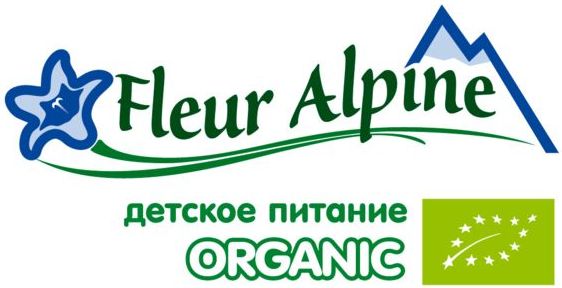
Nestle
"Humana"
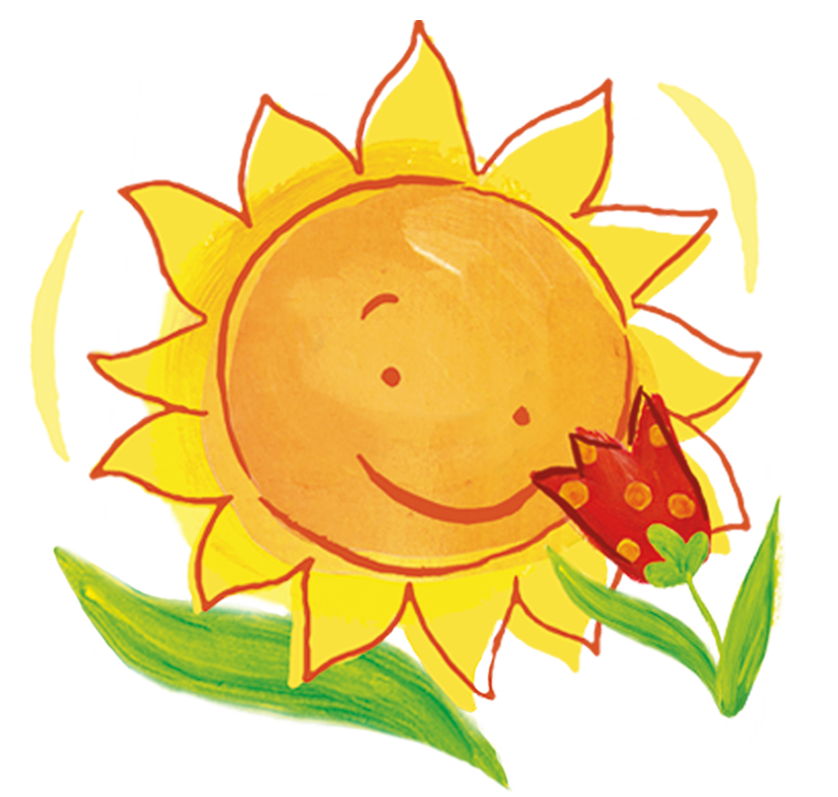
- Represented by only two types of cereals - buckwheat and oatmeal.
- Supplement of 13 vitamins, iron and iodine.
- Porridges do not contain sucrose, instead there are other sugars - glucose and fructose, and maltodextrin is also added.
- Buckwheat and oatmeal have rice flakes.
"Baby"

- They are represented by three types of which two cereals consist of one type of cereal - buckwheat and corn, and one of the mixture.
- All these cereals contain the addition of maltodextrin, vitamins and minerals.
- May contain traces of gluten and milk (excluding cornmeal).
- Does not contain sucrose.
"Baby"
"Heinz"
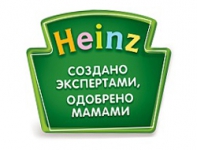
"Fleur Alpin"
"Frutonyanya"
- This is a hypoallergenic buckwheat, rice porridge, enriched with 12 vitamins and 3 minerals without added sugar and fruits.
"Semper"

- Represented by rice and buckwheat porridge, made from the central part of the grain, which allows to achieve a more delicate texture of the finished product and high nutritional value.
- In the production of cereals, hydrolysis technology is not used, since the manufacturer considers this to be unnecessary due to the sufficient activity of the enzyme that breaks down starch in the child by the time complementary foods are introduced.
- Porridges do not contain additives of vitamins and minerals, they contain only cereals.
"Winnie" 
- Hypoallergenic buckwheat porridge is made without added sugar, salt, with the addition of prebiotic (inulin), maltodextrin, minerals, vitamins.
- The rest of the cereals contain sugar and therefore are not hypoallergenic. There are porridges with fruit fillings.
"Bellakt"
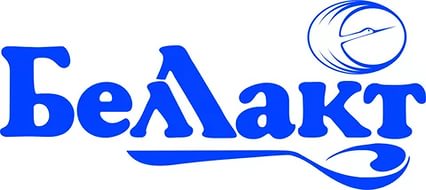
- Large selection of cereals with and without fruit.
- Contains supplements of minerals and vitamins.
- In some cereals, the prebiotic inulin is added, which is indicated on the package.
"Clever Girl"

- Low-allergenic cereals are prepared on the basis of rice, corn grits with the addition of prebiotic inulin, fructose, vitamins and minerals.
- Other dairy-free cereals do not contain prebiotics and are made with added salt and sugar.
- There are cereals with fruit fillings.
Comparative analysis of the assortment of dry children's dairy-free cereals
| Trademark | Types of dairy-free cereals | The presence of milk porridge | The presence of cereals with prebiotics and / or probiotics | The presence of cereals with fruit fillings |
|---|---|---|---|---|
| "Baby Sitter" | Rice, buckwheat, barley, oatmeal, semolina and multi-grain cereals. | Not | Not | Not |
| "Grandmother's Lukoshko" | Rice, buckwheat, corn. | Not | Yes | Not |
| "Remedia" | Rice, buckwheat, semolina, oatmeal and porridge from a mixture of cereals | Not | Not | Not |
| Nestle | Buckwheat, rice, corn, oatmeal and porridge from a mixture of cereals. | Yes | Yes | Yes |
| "Humana" | Buckwheat, oatmeal. | Yes | Not | Not |
| "Hipp" | Rice, buckwheat, corn, wheat, oatmeal and multigrain cereals. | Yes | Not | Yes |
| "Baby" | Buckwheat, corn and porridge from a mixture of cereals. | Yes | Not | Not |
| "Baby" | Buckwheat, rice, corn, oatmeal. | Yes | Yes | Yes |
| "Heinz" | Buckwheat, corn, rice, oatmeal and cereals from a mixture of cereals. | Yes | Yes | Yes |
| "Fleur Alpin" | Rice, buckwheat, corn, oatmeal, wheat and cereals from a mixture of cereals. | Yes | Not | Not |
| "Frutonyanya" | Buckwheat, rice. | Yes | Not | Not |
| "Semper" | Rice, buckwheat. | Yes | Not | Not |
| "Winnie" | Buckwheat, rice-buckwheat, wheat with apple and porridge from a mixture of cereals. | Yes | Yes | Yes |
| "Clever Girl" | Buckwheat, rice, corn, rice-buckwheat and porridge from a mixture of cereals. | Yes | Yes | Yes |
| "Bellakt" | Buckwheat, oatmeal, wheat, corn, rice-buckwheat and cereals from a mixture of cereals. | Yes | Yes | Yes |
Assortment of ready-to-eat dairy-free baby cereals
 "Hipp"
"Hipp"
In addition to dry cereals, dairy-free cereals with fruits are produced in jars with or without starch. Two names of this series of products do not refer to cereals at all: “Apples with banana and cookies” and “Pear puree with cereals”.
"Frutonyanya"
Made from a mixture of boiled cereals and fruit puree of one or more types without any additives or with a small addition of fructose.
When to introduce complementary foods with dairy-free cereals
Everything here is largely individual and depends on the type of feeding of the child and his state of health. It is recommended for artificial children to give the first complementary foods with dairy-free gluten-free porridge from 4 months, and for breast-fed children after 6 months. Attention is drawn to the weight gain of the child. So, if there is a pronounced underweight, then complementary foods start from 4-5 months, and if there is excess weight, then from 6.5-7 months. Each type of porridge is introduced for about one week. Thus, in one month the child will get acquainted with approximately three types of one-component cereals.
After about a month, when the child gets used to two types of one-component porridge, you can introduce porridge containing these two types of cereals at the same time. For example, if a child has tried one-component rice and buckwheat porridges, then you can introduce a two-component buckwheat-rice porridge. It is advisable not to change the manufacturer. If this manufacturer does not have such porridge, then you can make it yourself by mixing one spoonful of each of the cereals. Then cook according to the usual scheme for you. Before you start giving gluten-containing cereals, offer already tested cereals with added fruit. If the manufacturer does not have such cereals, it does not matter, you can always add mashed potatoes or juice to regular dairy-free porridge.
Important! Two-component gluten-free porridge can be introduced only after the child gets used to each type of cereal separately.
One-ingredient gluten-free dairy-free porridge can be given to children older than five months. You need to introduce it gradually, for example, giving it every other day, gradually switching to gluten-containing porridge and thus completely replacing gluten-free porridge. Gluten-containing cereals are recommended to be given to the child in the following sequence: oatmeal, oatmeal, semolina and millet.
Manufacturers of ready-made cereals, indicating the period for the introduction of complementary foods on the package, follow the standards specified in SanPiN 2.3.2.1940-05. At the same time, all cereals should not contain flavors, dyes, stabilizers, preservatives and food additives, except for those permitted for use. A strict ban applies to sweeteners.
All types of cereals may contain fruit fillers in accordance with age recommendations.
| Child's age | fruit type |
|---|---|
| Older than 4 months | Apple, pear, plum, peach, apricot. |
| Older than 5 months | Black and red currants, raspberries, cherries, quince, cherries, blueberries, lingonberries, cranberries, etc. |
| Older than 6 months | Citrus fruits (tangerines, oranges, grapefruits), melon, pineapple, banana, mango, strawberry, wild strawberry and additives of other fruits with potentially high allergenicity. Honey. |
| Older than 7 months | Papaya, kiwi, guava. |
| Older than 9 months | Grapes, cocoa. |
- If you use ready-made cereals, then follow all the proportions indicated on the package.
- Cereals can affect the digestion and stool of the child. So buckwheat and oatmeal have a "laxative effect", and rice strengthens. Corn does not have a significant effect on the child's stool. When choosing porridge for the first complementary foods, consider these features, taking into account the stool of your child.
- Do not start complementary foods if the baby is not healthy or if a vaccination is planned.
- For the first time, prepare a small amount of porridge - 5 g (approximately 1 teaspoon without a slide) per 100 ml of liquid (water or infant formula). The resulting product should be liquid. During the week, bring the amount of complementary foods to the required norm.
Child's age, months Porridge, g 4-6 10-150 7 150 8 180 9-12 200 - Be sure to watch the child's reaction. In case of rash, anxiety, gastrointestinal disturbances, stop feeding and consult a doctor.
- Introduce the first solid food at the second feeding to monitor your baby's reaction throughout the day.
- It is most convenient to use a soft silicone spoon instead of a metal one - this way the baby's gums will not be scratched.
- The optimal temperature of porridge is 37C, which corresponds to the temperature of breast milk.
- Do not force your child to eat porridge for the first time. If the baby is persistent, offer later. It is quite normal if the child begins to eat porridge only after 8-10 attempts.
- Do not use the leftovers of cooked porridge for later feeding.
How to choose porridge in the store
- Examine the label on the package of porridge, indicating the age of the child from which porridge can be given.
- Choose the right type of porridge according to the age of the child, but usually manufacturers take into account the recommendations of pediatricians on the type of porridge in advance.
- Industrially produced cereals are usually enriched with vitamins and microelements, the composition of which is indicated on the packaging.
- For the first feeding, refrain from cereals containing fruits, even if the child's age is suitable.
- Do not salt or add sugar to porridge.
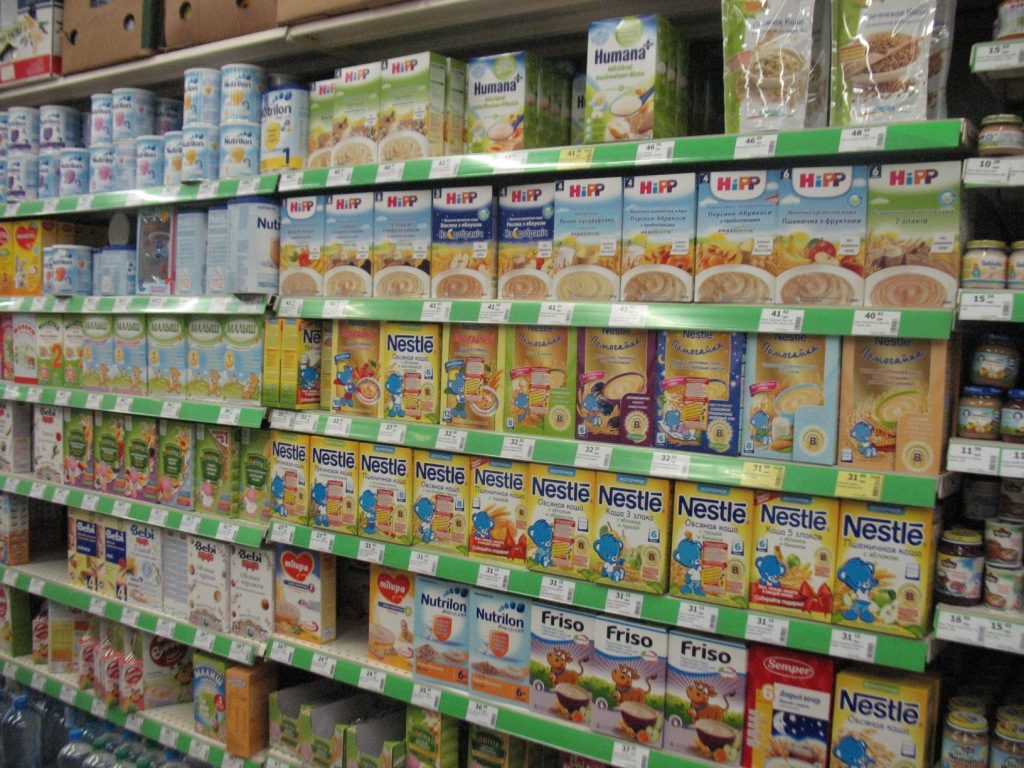 The benefits of ready-made cereals
The benefits of ready-made cereals
- Chemical and microbiological safety.
- Composition that meets age-related physiological characteristics of metabolism and digestion.
- Grinding degree suitable for the possibilities digestive system child
- High quality and safety of raw materials.
- A variety of nutritional components that are not available at home.
- Cooking speed.
- Ready-made dairy-free baby cereals are best for children with intolerance to cow's milk protein. The fact is that milk is a source of calcium for the body and children on a dairy-free diet along with cereals home cooking may not be getting enough. Ready-made baby cereals additionally enriched with calcium can compensate for its lack.
What is the best dairy-free porridge
- The optimal choice for the first complementary foods is industrially produced dairy-free hypoallergenic porridge enriched with a complex of vitamins and minerals.
- From the very beginning, it is better to choose a manufacturer that has a wide range of dairy-free cereals without fruit additives in order to fully acquaint the baby with various types cereals before the introduction of milk porridge.
- Do not chase a wide range of dairy-free cereals with the addition of fruit. You can always make your own with ready-made or homemade fruit puree, age appropriate.
- If you prefer organic food, then you can give preference to Hipp, Samper and Fleur Alpin porridges. At the same time, keep in mind that they contain minimal or no vitamin and mineral supplements.
- For problems with the tummy, opt for dairy-free cereals enriched with prebiotics, which are a nutrient medium for the development of beneficial intestinal microflora (Grandmother's Basket, Baby, Heinz, Winnie) and / or probiotics in the form of dry beneficial microorganisms ( Nestle).
